You need to opt for a paint protection measure to preserve your vehicle’s long-lasting finish even after years of using it. Paint protection film and Paint protection spray are two popular options to achieve a flawless, shiny car.
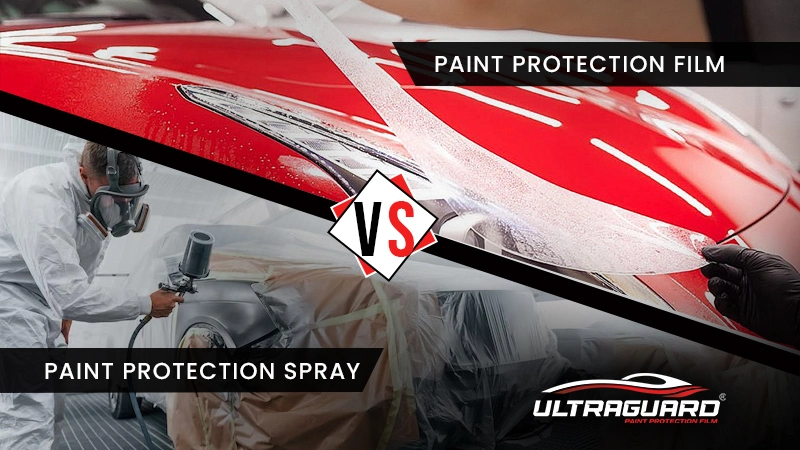
In this blog, we will explain the significant differences between Paint Protection Spray vs Paint Protection Film.
Let’s delve into the details to determine which option reigns supreme in paint protection.
What is Paint Protection Film?
Paint Protection Film is a thick protective film applied on the vehicle’s surface to shield it from the impact of minor scratches, swirl marks, insects, bird droppings, and other environmental contaminants. PPF is made of thermoplastic polyurethane (TPU), which can be transparent or colored in appearance.
Paint protection films shield your car from sunlight, which can make the paint color fade. Cleaning and maintaining your car with PPF coating is simple. If you decide to remove it, you can do that without damaging your car’s paint.
Benefits of PPF (Paint Protection Film)
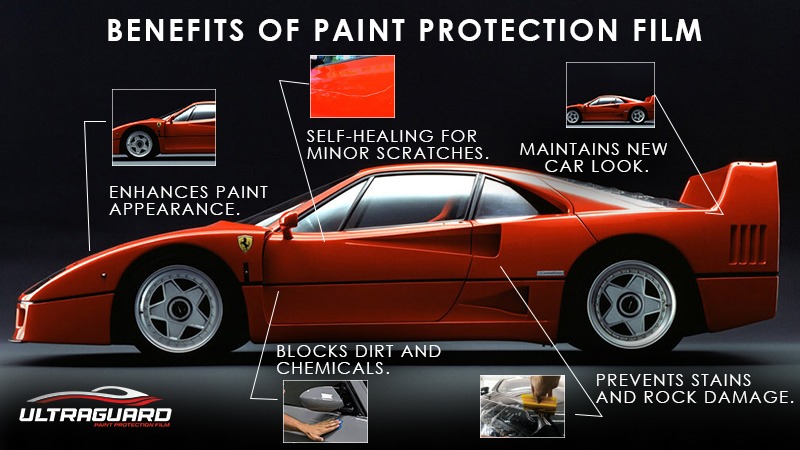
Putting PPF on your car makes its paint look even better, giving it a shiny, custom appearance.
- PPF has a particular layer that stops bad stuff like dirt or chemicals from getting through.
- It keeps away hard-to-remove stains and lessens damage from tiny rocks.
- The cool thing about PPF is that it is self-healing; it can fix minor scratches by itself.
- Since PPF stops the paint from getting scratched or nicked, your car stays looking new for longer.
What is Paint Protection Spray?
Paint Protection Spray also known as spray-on-PPF is an advanced way to keep the parts of your car that are most likely to get damaged safe. It should be put on by someone officially recognized and trained to do so. In a particular room that keeps the temperature just right, they use a type of spray gun that doesn’t use a lot of pressure but can cover a large area to put the spray on.
They add the spray in layers, letting each dry before adding the next. The process includes a primer layer, a base coat, and a shiny top coat. They also measure each layer’s thickness with a unique tool to ensure the total thickness is at least 300 microns.
Benefits of PPS (Paint Protection Spray)
- PPS is smoothly applied to the vehicle’s surface without any cut marks or peeling at the edges, which is common in lower-quality installations.
- This protective spray adds a ceramic layer for extra shine and gloss, keeping your vehicle’s appearance fresh even after years of usage.
- It will help you maintain your car’s resale value by preserving your vehicle’s showroom finish.
- You can easily change and customize your car’s color with the option to switch it back anytime.
- PPS Comes with a long-term warranty of a minimum of 3 years.
Paint Protection Spray vs Paint Protection Film – Difference
When considering ways to protect your car’s paint, you might come across Paint Protection Spray (PPS) and Paint Protection Film (PPF). Here’s a straightforward breakdown of their fundamental differences:
Nature of Protection:
PPS: It is a liquid polymer that forms a protective layer over your car’s paint when it gets dried.
PPF: This is a solid, transparent film that’s applied directly onto the surface of your car.
Application Process:
PPS: These should be applied in a specialized room with a regulated temperature and must be used by professionals only.
PPF: This does not require any specialized room but needs professional installation due to its precise nature, ensuring it fits perfectly without bubbles or wrinkles.
Cost Implication:
PPS: Costs more upfront because of the materials used and the labor involved in the meticulous installation process.
PPF: More budget-friendly due to its more straightforward application process.
Customizing Option:
PPS: Spray-on-PPF works as a clear coat, which is clear. It does not give any customizing option to the car owners.
PPF: On the other hand, paint protection films come in various colors and textures, enabling car owners to enhance the vehicle’s aesthetics.
Lifespan and Durability:
PPS: They usually last about 3 years, making it a short-term solution.
PPF: It is designed to last much longer, up to 5 years or more, offering durable protection.
Paint Protection Spray vs Paint Protection Film – What’s Best?
In conclusion, now that we have clarified the major differences between Paint Protection Spray and Paint Protection Film, you should choose only the best. Let us make this more straightforward for you if you still need clarification. Where the primary function of both options is to safeguard the vehicle’s paint, they differ in paint protection level, installation process, cost incurred, and maintenance. PPS is ideal if you have a reasonable budget and want high scratch-resistant protection by creating 300 microns thickness protection. But if you have budget constraints, you can choose PPF. Paint protection films have self-healing ability, which PPS does not have. Also, PPF shields the painted surface from minor scratches and swirl marks.
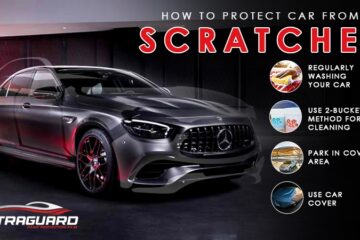
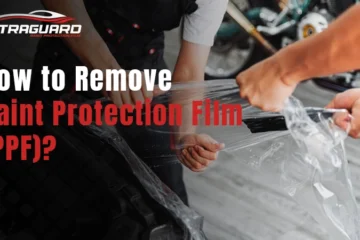
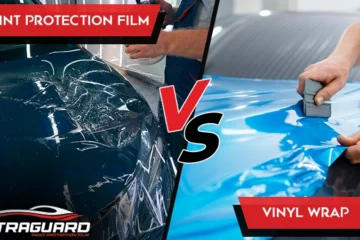

0 Comments